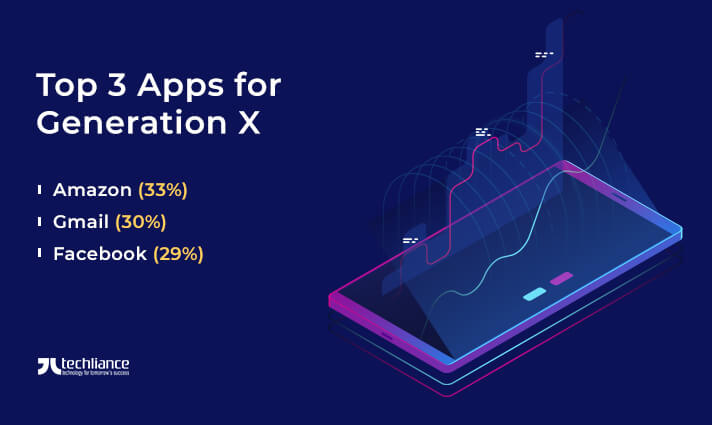We all can call our mobile phone a “genie in a bottle” that obliges almost all our whims. Moving through 2024, a mobile device as a tiny gadget follows our every command without any slippage. There are loads of mobile app statistics that prove the value of this miracle invention.
Technology is superseding our expectations by enabling highly extensive customer-centric experiences. Accordingly, this is making it impossible for us to be without our mobile phones at any time of the day. Back in the early 2000s, when mobile apps had become the “thing”.
However, nobody could predict the norm they would become in the future. Fast forward to 2024, and it’s all about getting hold of the brilliance of the interplay of technologies. Therefore, businesses are developing mobile apps to create powerful experiences for users of all kinds.

Why mobile apps have become popular?
One answer “revenue” summarizes the reasons behind the popularity of mobile apps. Companies spend huge budgets to launch mobile applications they want consumers to utilize. Subsequently, they aim to make money through the usage of their apps.
Remember, the cost of an app varies depending on its features and complexity. The type of technology and platform are the determining factors of the total cost of the mobile app. A company can get an app built under a $5000 budget even.
However, some apps can cost $100,000 or even more. For example, the development of an iOS app is usually 10-15% more costly than an Android app. So, think over all these factors combined to develop a mobile app.
Why do businesses go through all these extensive efforts? It’s only to get the attention of the consumers, find ways to generate revenue and get higher ROI. Usually, this is done by advertisements, and/or directly selling their products/services to consumers through mobile apps.
Editor’s pick of mobile app statistics
Here are some cool mobile app statistics that further instill how indelible smartphone usage is.
- Apple’s App Store and Google Play remain the leading app marketplaces with over 4.5 million apps.
- Microsoft Store, Amazon Appstore, Huawei AppGallery, Aptoide, and GetJar are other digital marketplaces.
- As of November 2023, Google Play is home to over 2.59 million apps. (Statista)
- Over 1.83 million apps are available on Apple’s App Store as of November 2023. (42matters)
- Apple and Google dominate the app marketplace with over 95% share globally — excluding China. (Business of Apps)
- Mobile apps are forecast to generate a revenue of $673.778 billion by 2027, up from $467.083 billion in 2023. (Statista)
- A user spends nearly 5 hours on a mobile phone daily. (Data.ai)
Sources: Statista — 42matters — Business of Apps — Statista — Data.ai
Mobile application usage statistics
- About 49% of people in the US open an app 11+ times a day.
- In the United States alone, about 21% of millennials open an app 50+ times a day.
- The USA is a huge market for media-related apps as 7-% of media usage comes from there alone.
Mobile ownership and smartphone penetration statistics
China, India, and Indonesia are home to most mobile phone subscribers. Whereas, China, India, and the United States are the top three countries with the most smartphone users. In terms of smartphone penetration, the United States, Japan, and Russia are the global leaders.
Here is the list of the top 20 countries by mobile phone and smartphone users in 2022.
| Country | Population | Mobile Users | Smartphone Users | Smartphone Penetration |
| China | 1.43 Billions | 1.61 Billions | 974.69 Million | 68.4% |
| India | 1.42 Billions | 1.51 Billions | 659.00 Million | 46.5% |
| US | 338.29 Millions | 380.58 Millions | 276.14 Million | 81.6% |
| Indonesia | 275.50 Millions | 385.57 Millions | 187.70 Million | 68.1% |
| Brazil | 215.31 Millions | 284.20 Millions | 143.43 Million | 66.6% |
| Russia | 144.71 Millions | 256.12 Millions | 106.44 Million | 73.6% |
| Japan | 123.95 Millions | 146.65 Millions | 97.44 Million | 78.6% |
| Nigeria | 218.54 Millions | 190.48 Millions | 83.34 Million | 38.1% |
| Mexico | 127.50 Millions | 101.34 Millions | 78.37 Million | 61.5% |
| Pakistan | 235.82 Millions | 194.58 Millions | 72.99 Million | 31% |
| Egypt | 110.99 Millions | 95.34 Millions | 71.24 Million | 64.2% |
| Philippines | 115.56 Millions | 106.99 Millions | 69.70 Million | 60.3% |
| Germany | 83.37 Millions | 107.00 Millions | 68.25 Million | 81.9% |
| Iran | 88.55 Millions | 96.16 Millions | 65.91 Million | 74.4% |
| Vietnam | 98.19 Millions | 72.30 Millions | 65.48 Million | 66.7% |
| Turkey | 85.34 Millions | 72.20 Millions | 64.00 Million | 75% |
| UK | 67.51 Millions | 83.10 Millions | 55.46 Million | 82.2% |
| France | 64.63 Millions | 72.18 Millions | 53.37 Million | 82.6% |
| Thailand | 71.70 Millions | 69.00 Millions | 52.63 Million | 73.4% |
| Bangladesh | 171.19 Millions | 180.78 Millions | 52.03 Million | 30.4% |
Mobile app statistics about consumer spend
A look at some of the mobile application stats pertaining to consumer spending trends reveals the following figures about smart apps.
- The highest attention toward mobile apps is pertaining to games, which make up 72% of the total app store spend.
- Call of Duty and Mario Kart Tour were the most popular game apps for 2019.
- Subscriptions in non-gaming apps fueled growth in spending, from an 18% share in 2016 to 28% in 2019.
- China remains the largest market, making up 40% of global spend.
- Money expenditure on subscriptions and in-app purchases in mobile gaming and non-gaming applications has grown in the United States.
- The mobile application market will grow to $567.19 billion by 2030 from $228.98 billion in 2023. (Grand View Research)
Mobile app statistics about smart application users
Globally, mobile users are likely to reach around 7.49 billion by 2025 from 7.33 billion in 2023. The primary focus for mobile apps is Generation Z (born after the mid-to-late 1990s). These are the main consumer markets for various types of apps including games, social networking, communication, travel, and entertainment.
The top 3 apps for millennials (Generation X; born between 1981 to 1996) in 2019 were as follows.
- Amazon (33%)
- Gmail (30%)
- Facebook (29%)

Forecasts for mobile app trends
The following technologies are set to have greater use in mobile apps during 2024.
- Internet of Things
- Augmented and virtual reality
- Voice apps
- Artificial intelligence
- Wearable gadgets
- New technologies integration
Let’s explore these leading technology trends for mobile applications.
Internet of Things
The Internet of Things (IoT) is also one such concept that people are widely embracing in 2024. Consequently, cloud-driven apps have also become an emerging factor this year. With 83% of enterprise workloads on the cloud, Cisco believes 90% of mobile traffic will go to these cloud-driven apps.
2024 will witness these apps become more powerful in data retrieval. This will mean that they can instantly access data from the cloud. Accordingly, they will take up less space on the phone’s internal memory.
Augmented and virtual reality
The augmented reality (AR) and virtual reality (VR) market will expand by leaps and bounds from $16.8 billion in 2019 to $160 billion in 2023. The technology is a hit with social media platforms introducing AR filters in their apps. Likewise, game developers are releasing game apps specifically for AR/VR devices.
Voice apps
Mobile apps are built due to the consumer demand. Voice search has become the need of the day. The global voice assistant application market will likely grow to $11.2 billion by 2026 from $2.8 billion in 2021.
That’s why more than 34% of marketers were forecast to have a voice app by 2020. VOIP or internet calling applications like Google Voice and Line2 are popular examples. Virtual assistants like Google Assistant, Apple Siri, and Amazon Alexa are also the lead runners in voice apps.
Artificial intelligence
The worldwide artificial intelligence (AI) market is set to reach $2,575.16 billion by 2032 from $454.12 billion in 2022. Much of the machine learning (ML) and AI technology incorporation will power mobile devices and applications. AI is truly transforming the way we live and do business.

Wearable gadgets
Once, Guardian had predicted that mobiles were moving out of the pocket and becoming wearable. It meant mobile apps were also to adapt to intelligent aggregation of content. Therefore, wearable technologies are coming up with more refined and elegant hardware for consumers.
Mobile apps are integrating many of the upcoming technologies such as AI, ML, Blockchain, and 5G. Globally, the wearable technology market will reach $415.12 billion by 2029, resulting in the sale of 1,150.71 million units. Another research forecasts the worldwide sales of wearable smartwatches and fitness trackers to cross $400 million by 2026.
App developers are building more mobile apps for wearable devices. For example, smartwatches, fitness bands, movement trackers, etc. And the show has just begun.
New technologies integration
Mobile applications are set to change due to several factors. For instance, varying screen sizes, faster loading, less power consumption, and seamless data transmission. The main intent is to provide mobile users with a flawless experience that leaves them wanting more.
Advertisement for smart devices has become a major form of digital marketing. The global mobile advertisement market size is set to grow to $750.21 billion by 2030 from $175.62 billion in 2023. In-app mobile ads have become a major source of income for app makers.

Conclusion
Like it or not, mobile phones have an indelible impact on our lives. In 2024, the mobile app industry is set for growth without slowing down. Besides, the focus of the industry remains on continual improvement of the built apps and their quality. It has become more important to focus on the value provided to customers.
Companies are also trying to evaluate whether the developed app can meet customer expectations. By 2030, the mobile industry is set to contribute over $5 Trillion to the global GDP. With such a promising future, businesses are focusing on emerging technologies and integrating them with their mobile apps.
Are you thinking of getting a mobile app for your business? Your smart application can become the next hit in the global landscape. Partner with Techliance today to be part of the buzzing market where your consumer segment is just a click away from your reach.




